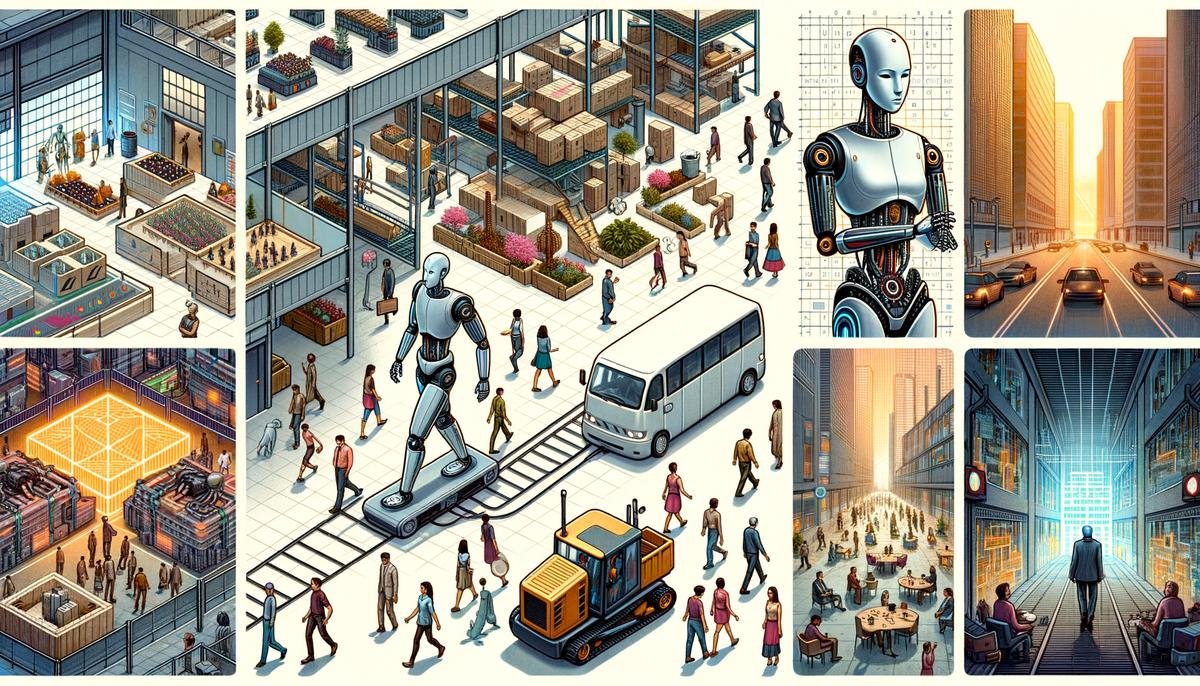Understanding Reinforcement Learning
Reinforcement learning (RL) is a machine learning training method that teaches software to make desired actions. It's based on rewarding desired behaviors and punishing undesired ones. An RL agent – the software being trained – perceives its environment, takes actions, and learns through trial and error.
Key components of reinforcement learning include:
- Agent: The decision-maker that interacts with the environment
- Environment: The context in which the agent operates
- State: A particular configuration of the environment
- Action: A move the agent can make
- Reward: Feedback given to the agent based on its actions
RL differs from supervised and unsupervised learning. In supervised learning, algorithms learn from labeled datasets, while unsupervised learning uncovers patterns in unlabeled data. RL combines experience with trial and error, allowing agents to develop strategies without explicit programming.
This approach is particularly useful in domains like gaming, robotics, and resource management, where predefined paths may not suit dynamic situations.

Key Algorithms in Reinforcement Learning
Several algorithms drive reinforcement learning:
- Q-learning: A model-free approach that maps actions in a given state to future rewards.
- Deep Q-Networks (DQN): Incorporates neural networks to handle complex environments, processing high-dimensional input like video game frames.
- Monte Carlo methods: Calculate average outcomes of actions over complete episodes, updating strategies after each round.
- Model-based methods: Construct a predictive model of the environment, simulating scenarios for planning.
- Model-free methods: Adapt strategies without a detailed environmental model, suitable for unpredictable or changing environments.
These algorithms enable systems to learn and adapt, bypassing conventional programming to develop intelligent decision-making capabilities.

Applications and Challenges
Reinforcement learning has found applications in various industries:
- Gaming: AI agents master complex games like Go and Chess
- Robotics: Autonomous robots navigate warehouses and perform intricate tasks
- Resource management: Systems optimize traffic control and inventory management
- Military: Preparation of autonomous ground vehicles for real-life situations
- Digital war games: Simulation of combat scenarios
However, reinforcement learning faces several challenges:
- Computational demand: Training models requires significant computational power and time
- Data requirements: Extensive, quality data is needed for comprehensive learning
- Reward function design: Poorly crafted reward functions can lead to undesired behaviors
- Balancing exploration and exploitation: Strategies like 'epsilon-greedy' are needed to optimize learning
- Limited applicability: Deployment can be difficult, especially in complex, real-world environments
Despite these challenges, ongoing advances in computational methods and data collection continue to expand the potential applications of reinforcement learning.

Comparing Learning Methods
Reinforcement learning is part of a quartet of machine learning approaches:
| Learning Method | Description |
|---|---|
| Supervised learning | Uses labeled data to predict outcomes, effective for classification and regression problems |
| Unsupervised learning | Finds patterns in unlabeled data, useful for clustering tasks |
| Semi-supervised learning | Uses a small set of labeled data with a larger set of unlabeled data |
| Reinforcement learning | Learns optimal strategies through interaction and feedback, without relying on labeled datasets |
Reinforcement learning excels in scenarios involving nuance and change, where adaptability is crucial. It's particularly effective for problems that require decision-making in dynamic environments.
Reinforcement learning offers a dynamic approach to problem-solving, emphasizing action and consequence. Its ability to continuously learn and refine strategies makes it valuable for addressing complex challenges in unpredictable environments. As the field progresses, we can expect to see more sophisticated applications across various industries, from advanced robotics to personalized AI assistants.
- Sutton RS, Barto AG. Reinforcement Learning: An Introduction. MIT Press; 2018.
- Mnih V, Kavukcuoglu K, Silver D, et al. Human-level control through deep reinforcement learning. Nature. 2015;518(7540):529-533.
- Silver D, Hubert T, Schrittwieser J, et al. A general reinforcement learning algorithm that masters chess, shogi, and Go through self-play. Science. 2018;362(6419):1140-1144.




